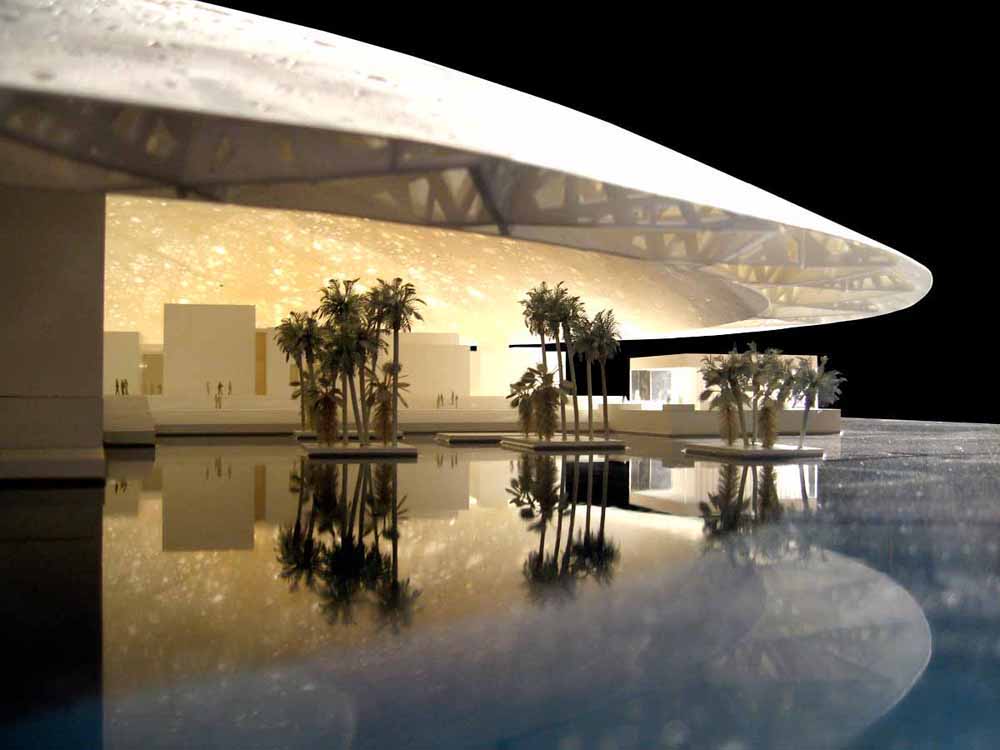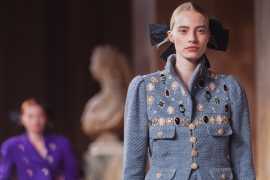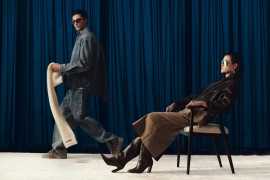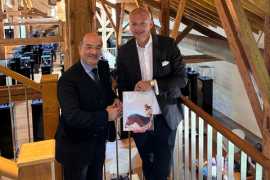Louvre Abu Dhabi keeps the public guessing
By olya Sunday, 09 August 2015 2:04 PM

Immortal Figures must be the world's shortest art exhibition! The three sculptures and one painting, though, on display at Manarat Al Saadiyat, offer a glimpse into the much-awaited museum, Louvre Abu Dhabi, in the national capital.
The exhibition is part of Louvre Abu Dhabi Stories, which has revealed the permanent art collection at the Louvre Abu Dhabi to the public.
The "Stories", a sequence of two art exhibitions, started with Al Qalam, a display of ancient manuscripts and calligraphy which was exhibited during the holy month of Ramadan. The second sequence, Immortal Figures, opened on June 28 will remain on display until August 31. In both exhibitions combined, only 10 of Louvre Abu Dhabi's permanent collection artworks were revealed.
"The reason is that we want to keep the public intrigued, curious about what will Louvre have to offer," said Alia Zaal Lootah, associate registrar at Tourism and Culture Authority - Abu Dhabi (TCA) for Louvre Abu Dhabi.
"Of course, we don't want to reveal too much of the collection now, so the purpose of the exhibition is an introduction for the public of what there is to come when Louvre Abu Dhabi will open," she also told Khaleej Times.
Now in its last stages of construction, Louvre Abu Dhabi is expected to be completed in December this year, but its opening date is yet to be announced.
The story of Louvre Abu Dhabi began in 2007, when an intergovernmental agreement between Abu Dhabi and France was signed. Soon after the future museum's foundation was laid on Saadiyat island, TCA began building up the art collection.
So far, there are over 500 artworks in the Louvre Abu Dhabi's permanent collection, all securely kept between Abu Dhabi and France.
"For security reasons, we cannot unveil their exact location," pointed out Lootah.
TCA has also secured approximately 300 artworks on loan from major French institutions for the museum's opening. For now, the Immortal Figures is the only glimpse into the museum's future galleries of the ancient world.
The Immortal Figures theme refers not only to sculptures of human figures that survive the battle of time for thousands of years, but also to real human beings who immortalised their figure or their existence in various forms of art.
Among them is a Fayoum portrait (mummy paintings on wooden boards from the Coptic period) of an Egyptian funerary that would traditionally have been placed on the face of a mummified body.
"The Fayoum portrait is of utmost importance as it brings together two civilisations - the Greco-Roman and the Egyptian ones. When we look at it, it's like a modern painting, where we see the face very clearly; in the ancient traditions of Egypt, the face is always covered, but here is all opened, as the Greco-Romans wanted to show a likeness of the deceased," explained Lootah.
The Fayoum portraits are so called because they were mostly found in the Fayoum region of Egypt. The one in the possession of Louvre Abu Dhabi and on display now at Manarat Al Saadiyat, is over 1,700 years old and it was found in the ancient Egyptian city of Antinopolis, on the eastern bank of the Nile.
"There are only about 1,000 Fayoum portraits that survived today, and this one is one of the best! It has very detailed features, it kept its original composition, which means that it was excellently maintained," mentioned Lootah.
Also on display is Maitreya, a small gilt copper alloy statue, found in Nepal around 12th century. The figure was created by Newari artists of the Kathmandu valley in the Middle Ages.
The painted wood Uli statue dating from 18th - 19th century was used for funerary rituals of important chiefs of the Madak tribe in New Ireland. The figure embodies the essence of both male and female physical forms.
"There are layers upon layers of painting on the statue, as it was used not just for one but many of the tribe's chiefs, thus representing the entire tribe, both men and women," mentioned Lootah.
The only sculpture in the exhibition to have a known artist is a bust of Saint-Pierre Martyr, created by Andrea della Robbia in 1435-1525, in Florence, Italy.
"This again is very important for us because it is from the early Renaissance period. Renaissance artworks are not available on the market, you usually only find them in museums," said Lootah.
The Immortal Figures exhibition is not giving just a sneak peek into Louvre Abu Dhabi's, but also reveals how its artworks are going to be displayed. Unlike The Louvre and other major museums around the world, Abu Dhabi's Louvre will not exhibit its collection according to regions, but according to timeline.
"Sure, our galleries are going to be thematic, but we will put different civilisation together," she added. Thus, there will be and artwork from China standing next to one from Rome, for example, but both created in the same period of time. This approach will allow viewers to better understand art periods." – Khaleej Times –




























Add new comment